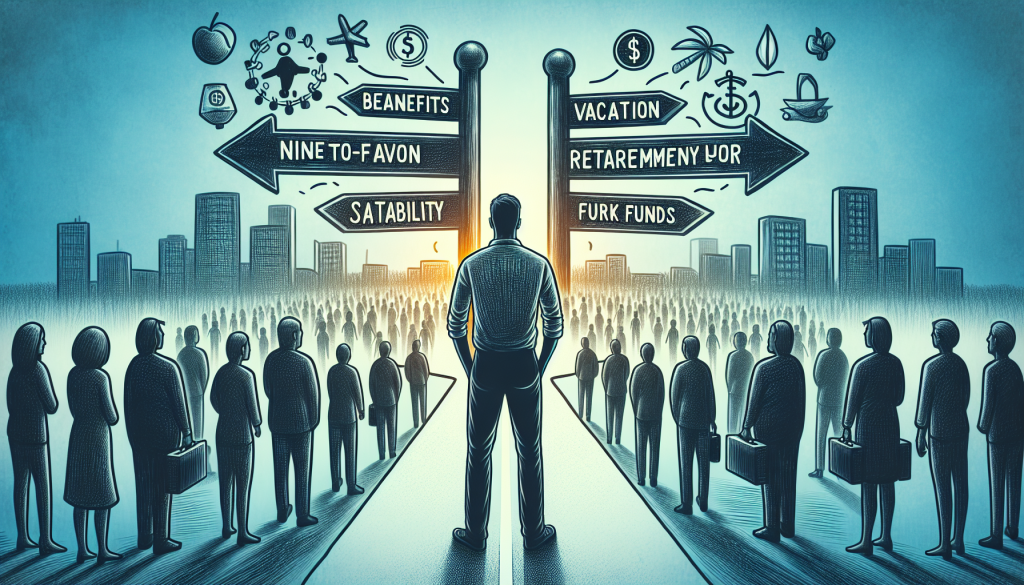
The Gig Worker’s Dilemma: Benefits, Stability, and the Future of Freelancing
The rise of the gig economy has led to a significant shift in the way people work. As traditional 9-to-5 jobs become less appealing, more and more individuals are turning to freelancing and gig work for both financial and personal fulfillment. While this type of work offers flexibility and autonomy, it also comes with its own set of challenges and uncertainties. In this article, we will delve into the gig worker’s dilemma, exploring the benefits, stability, and future of freelancing in the ever-evolving job landscape.
The Benefits of Being a Gig Worker
One of the main reasons people are drawn to freelancing is the ability to be their own boss. This means setting their own schedule, choosing their clients and projects, and working from anywhere in the world. Gig workers also have the potential to earn more than their traditional counterparts. As they are responsible for finding clients and setting their own rates, they have the opportunity to negotiate higher pay for their specialized skills.
Another perk of freelancing is the ability to diversify one’s income streams. Rather than relying on a single employer, gig workers can take on multiple projects and clients, reducing their risk of financial instability. This can also lead to a more fulfilling and varied career, as individuals can choose projects that align with their passions and interests.
Lastly, freelancing allows for a better work-life balance. As gig workers have the ability to set their own schedule, they can prioritize their personal lives and well-being. This can lead to increased productivity, creativity, and overall job satisfaction.
The Instability of Gig Work
Despite the benefits, there are also downsides to being a gig worker, the most prominent being the lack of stability and job security. As a freelancer, one has to constantly hustle for new projects and clients, which can be a daunting task, especially for those just starting. Additionally, gig work typically does not come with benefits such as health insurance, retirement plans, and paid time off. This places the burden of managing these expenses solely on the individual, making financial planning and stability more challenging.
Another concern for gig workers is the potential for job burnout. With the pressure to continuously find and complete projects, freelancers may struggle to find a work-life balance and run the risk of overworking themselves.
The Future of Freelancing
The gig economy shows no signs of slowing down, with a projected 86.5 million Americans working as freelancers by 2027 (Forbes, 2021). The pandemic has only amplified this trend, with many companies turning to gig workers to fulfill their staffing needs. This has led to an increased demand for freelance talent and has opened up opportunities for individuals in various industries.
However, as the gig economy expands, there is also a growing need for legislation and policies that protect gig workers. This includes access to benefits and a safety net for financial stability, as well as regulatory measures to ensure fair compensation and treatment. Companies are also expected to play a role in providing these protections for their gig workers.
In Conclusion
The gig worker’s dilemma is a complex one, with both pros and cons to this type of work. While the benefits of freelancing are alluring, it’s essential to weigh these against the potential challenges and uncertainties. As the gig economy continues to evolve, it’s crucial to advocate for the rights and protections of gig workers, ultimately leading to a more sustainable and equitable future of freelancing.
Are you a gig worker facing these dilemmas? Or a company looking to hire freelance talent? Let us know your thoughts and experiences in the comments below.
References:
Forbes. (2021). Rise Of The Gig Economy: 86 Million Americans Will Be Freelancers By 2027. Retrieved from https://www.forbes.com/sites/johnkoetsier/2021/02/09/rise-of-the-gig-economy-86-million-americans-will-be-freelancers-by-2027/?sh=3ee5fc8a5c5f
